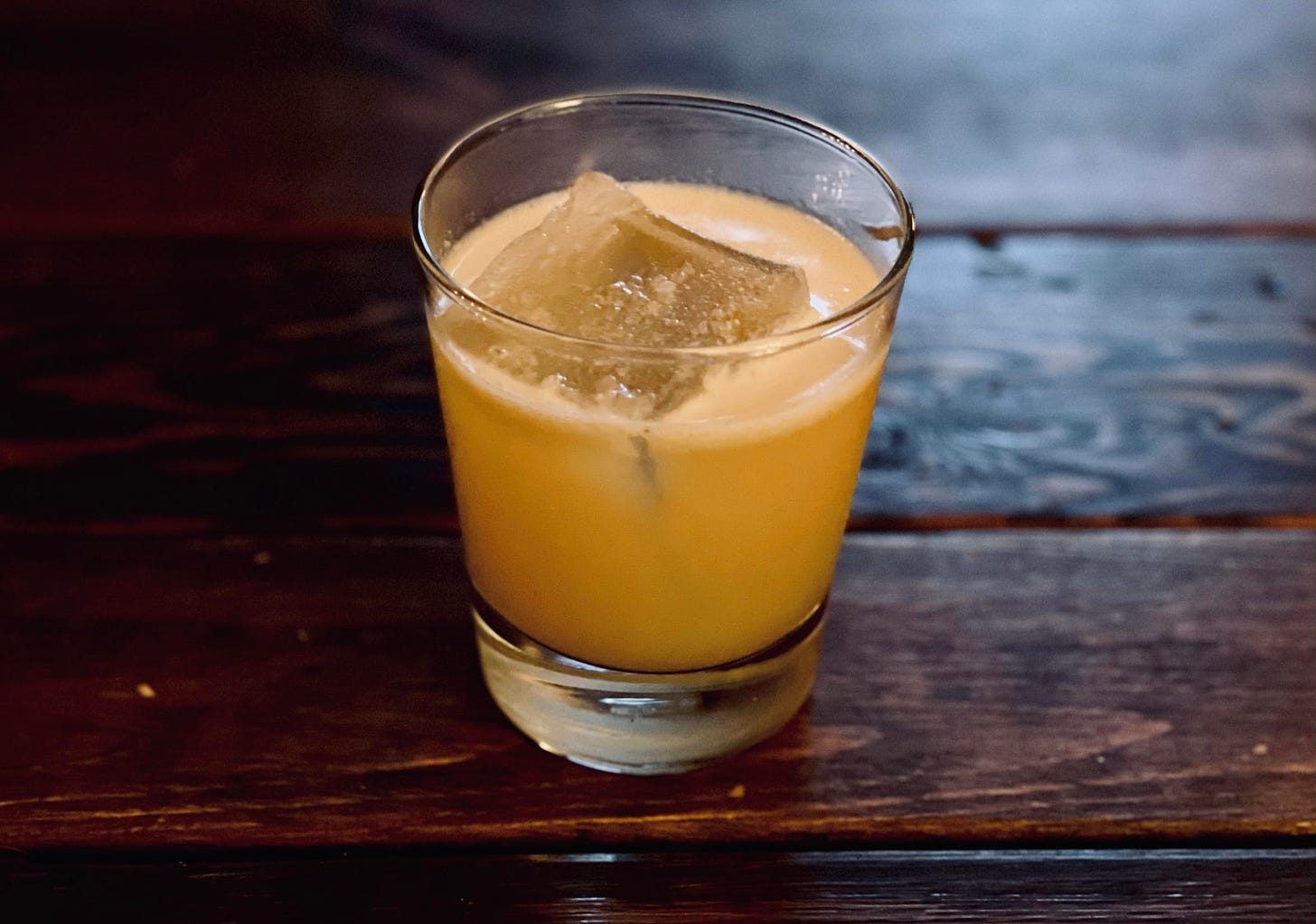Notes on Syrup
Plus! A honey-ginger scotch sour.
We’ve used a lot of syrups in this newsletter, and even devoted a couple of installments to creating specific syrups. But I’ve never outlined a broad theory of syrups in cocktails and how I think about both making and using them at home. So that’s what we’re going to do today. And then at the end, we’ll look at a modern classic that involves two different syrups, both of which will come in handy later for making other drinks.
Syrups are just sugar and liquid — most commonly water, but not always. The simplest of these is known as, er, simple syrup: It’s just an equal (1:1) parts combination of white table sugar and water, and you’ll see it listed in a lot of recipes for classic and contemporary cocktails.
Once you understand how simple syrup works, it’s pretty easy to extrapolate into other types of syrups: Change the ratio to 2:1 sugar:water, and you have rich simple syrup. Change the sugar from rich simple syrup to demerara sugar or cane syrup, and you have basic demerara syrup or cane syrup. Change the sweetener to honey and you have honey syrup. Infuse cinnamon or strawberries into your syrup, and you have cinnamon syrup or strawberry syrup — and so on and so forth. You can even change the liquid: Use pomegranate juice instead of water, for example, and you have grenadine.
The possibilities and combinations are endless, and if you eventually end up with an apple-rosemary-honey-spice syrup, you have at very worst done something interesting and had a useful learning experience. (If you make such a syrup — which to be clear I have never attempted myself — please let me know how it goes.)
What Syrups Do
Syrups have three primary functions in cocktails.

